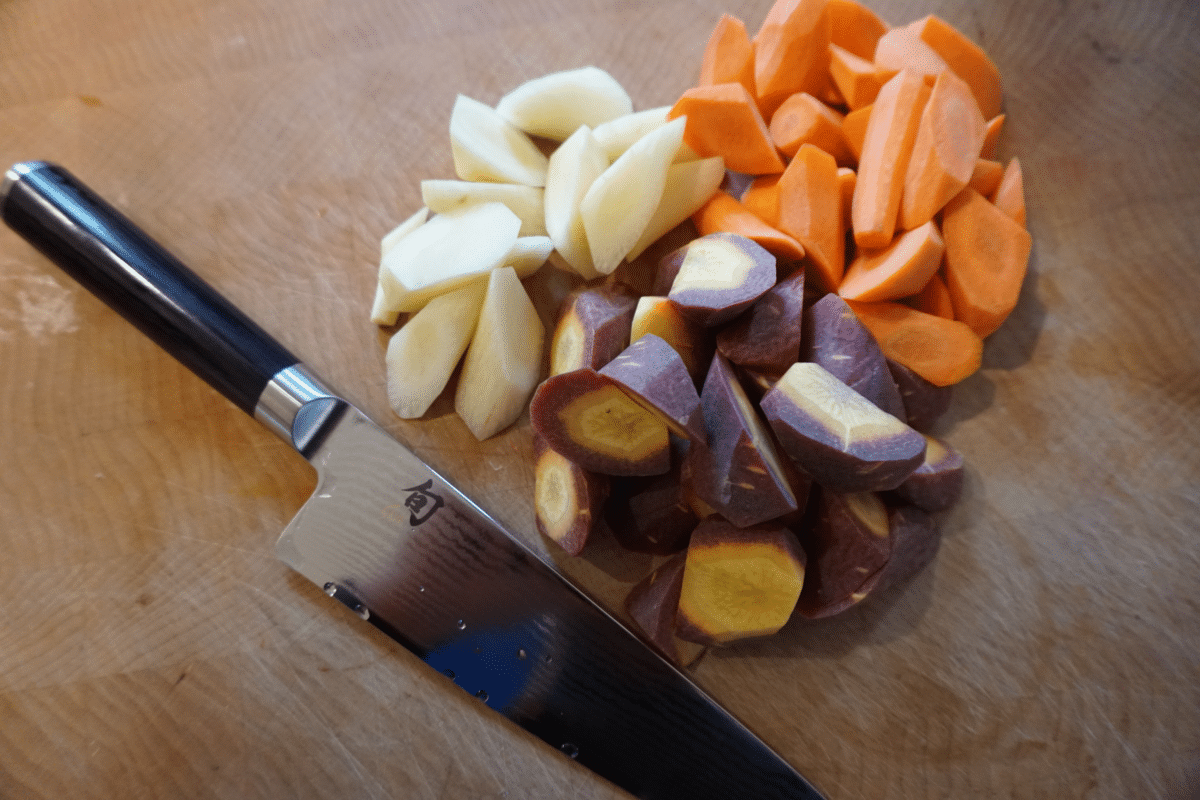The Magic Wand of the Kitchen
Make Magic
One of the single most important pieces of equipment in your kitchen is your chef’s knife, and picking the right one is akin to the scene in Harry Potter when the young wizards-to-be choose their wands. Sure, the wrong one will still work, but pick the right one and you’ve got some real magic in your hands.
The Shun Classic Asian Cook’s Knife is a great choice, and a distinctive one at that. While knives from Japan have been widely embraced in kitchens across the world, the “Western-style” chef’s knife is still extremely common in the US, and that’s partially because they have a reputation for utility. Western-style chef’s knives can do a bit of everything, from mincing and chopping to finely slicing and dicing. Japanese knives, on the other hand, are often task-specific, designed to do specific tasks extremely well.
The Gyuto
There are, of course, exceptions, and that’s where the Shun Classic Asian Cook’s Knife comes in. This style of blade is known as a “Gyuto,” and like a Western chef’s knife it’s all-purpose and capable of tackling a wide variety of kitchen tasks. If you’re looking for one knife that you can use to cut up fish, meat, and vegetables, to chop, dice, slice, and mince, this knife is up to the task.
But look, you can do those tasks with just about any knife, right? At the end of the day it isn’t just about what a particular knife can do, it’s about why you’d select one over another. And that is where the Shun Classic Asian Cook’s Knife really shines.
The Shun Classic Asian Cook’s Knife’s Versatility
While many all-purpose knives come in lengths of between 7-to-9 inches, it’s the 7” model that is the most versatile. That particular length makes this knife short enough for people with small hands, or those who simply don’t want a big hefty blade, but also make it long enough that this can truly compete with knives that are longer. And unlike Western-style chef’s knives, which run heavy, this blade is light but substantial, deft enough in the hand for slicing and detailed cutting but without being flimsy.
The Handle
Like other Shun knives, the Classic Asian Cook’s Knife also has some baseline benefits. The black rounded handle is made from a water-resistant engineered wood called PakkaWood, which means that not only will it have a long lifespan, it also won’t absorb bacteria or odors. The metal-capped handle is also suitable for both left-and-right handed use, and the shape means it sits quite comfortably in the hand.
The Blade
The blade itself is also distinct. Look closely and you’ll see wavy lines on the surface of the knife. That’s Damascus cladding—34 layers of it for this particular blade—which helps to prevent food from sticking to the blade and is an indicator of quality.
While this knife’s edge is rounded enough that you can chop and mince with it, it’s also just a bit straighter than you might find with similar Western-style knives, meaning that it’s a great choice for detail work. If you’re looking for a blade that’s easy to control, and where you can make nice, straight cuts or slices, this blade performs admirably.
Aesthetically, the Classic Asian Cook’s Knife is also beautiful, the sort of blade which not only stands out in a knife block but would be particularly well suited for a magnetic strip mounted on a wall. It’s a blade your friends will want to try, and which you’ll be pleased to own.

